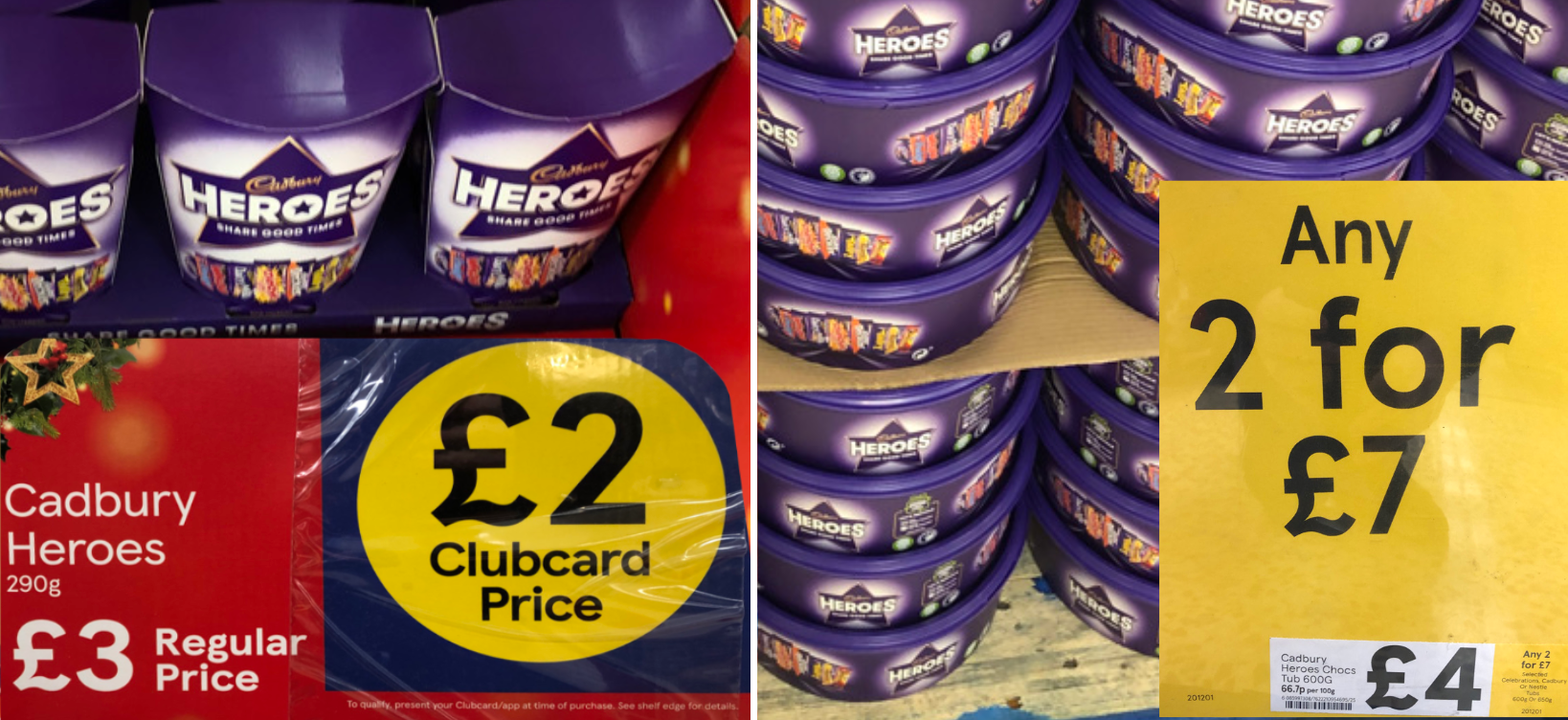Have you ever stood in the supermarket aisles with two similar products, trying to decide between them?
Here we have two different products and each has two different prices. It would take a while if you try to figure out which works out to be the best value in your head.
One label tries to help by giving you the cost per unit to help you compare. Which is 66.7p per 100g, but that is the cost before the offer price.
It would be helpful if it listed it for the offer price as well.
How do you comparing the different offers?
The simplest way to compare the different offers is to write them down in a table. This allows you to easily compare them without the distraction of the different offer labels.
| Product | Weight | Items | Price |
| Heroes Carton | 290g | 1 | £3 |
| Heroes Carton | 290g | 1 | £2 |
| Heroes Tub | 600g | 1 | £4 |
| Heroes Tub | 600g | 2 | £7 |
Now that we have all the different prices written down, it becomes a little easier to compare them. The tub is over twice the weight of the carton (290g versus 600g), but it is exactly twice the cost (£2 versus £4). This actually makes it really easy to figure out which is the better value product.
In this example, we can double carton price and weight to compare it to the tub. (As if we would be buying two of them). We find that the carton would only give us 580g of chocolate compared to 600g grams in the tub.
That works out to be a difference of about two chocolates.
Compare products using the shelf edge label
We saw above that one of the product labels showed the costs per 100g, which is really helpful when comparing similar products. However, it was only included on one label, which stopped us actually comparing them accurately without manually calculating it.
Product shelf labels with out-of-date information
Another issue with labels is often they are created by a human manually typing the values in. This leads to issues where the details can be incorrect.
Take this label, for example. The item is £3 and has a cost of £1.50 per kilogram. When you calculate it, that works out to be the original cost of £6.

They edited the original label to reduce the price, but the cost per kg wasn’t updated.
Some product labels don’t make sense
The previous label you can sort of understand. However, I can’t understand what has gone wrong with the per litre calculation for this compost label.
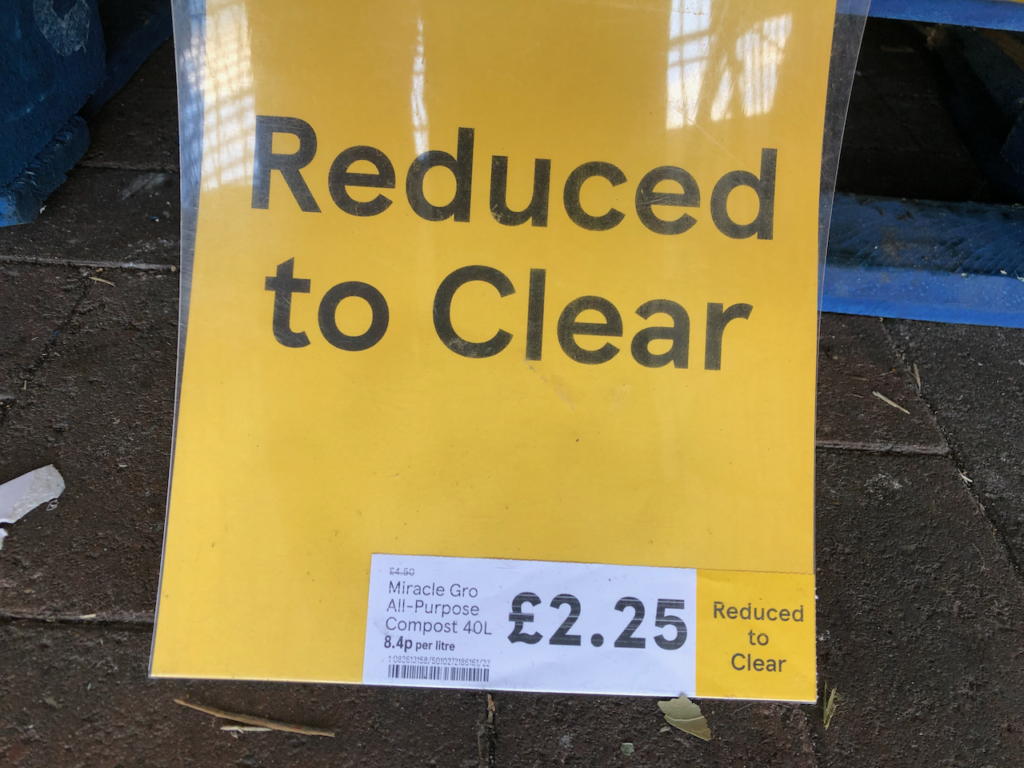
The label says the cost per litre is 8.4p per litre, and the bag contains 40 litres. If we multiply that up then we get £3.36, which is halfway between the current price of £2.25 and the original price of £4.50. The only thing I can think has happened is the product had been previously priced at £3.36.
How do you quickly calculate the cheapest product?
Calculating the most efficient product is something that I’m wrestled with for many years. Most phones have a built-in calculator that makes it reasonably easy to work out which product is the cheapest by weight.
Let’s take these biscuits and assume that we want to buy the cheapest by weight.
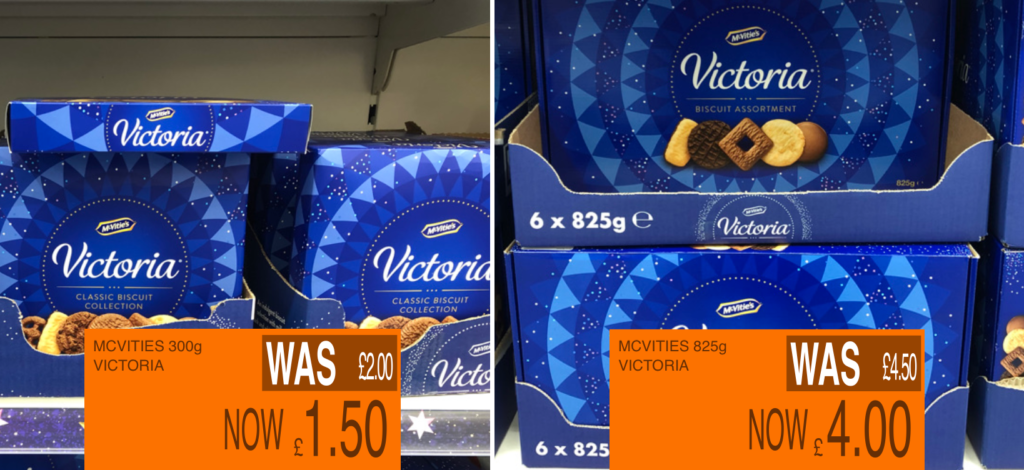
We should calculate the unit cost of each of the product to figure out which item gives us the best value. The way we calculate the cost per gram is by dividing the price by the weight.
price / weight = unit costWe are also representing the price in pence, as that will give us the unit cost in pence as well.
| Price | Weight | Unit Cost |
| 150 | 300 | 50p |
| 400 | 825 | 48.5p |
You can see from the table above that the larger box of biscuits is more cost efficient than the smaller box of biscuits. This will only be the case if you use all of the product.
The alternative to using a calculator
Here at Make Money, Save Money, we’re always looking for the best way to do things. Whilst a calculator works perfectly well, I wanted something a bit more visual to help me make my decisions.
That’s why we built an app to help us calculate the cost per unit for any product.
Using the biscuit example from above, we can plug those details into the app.
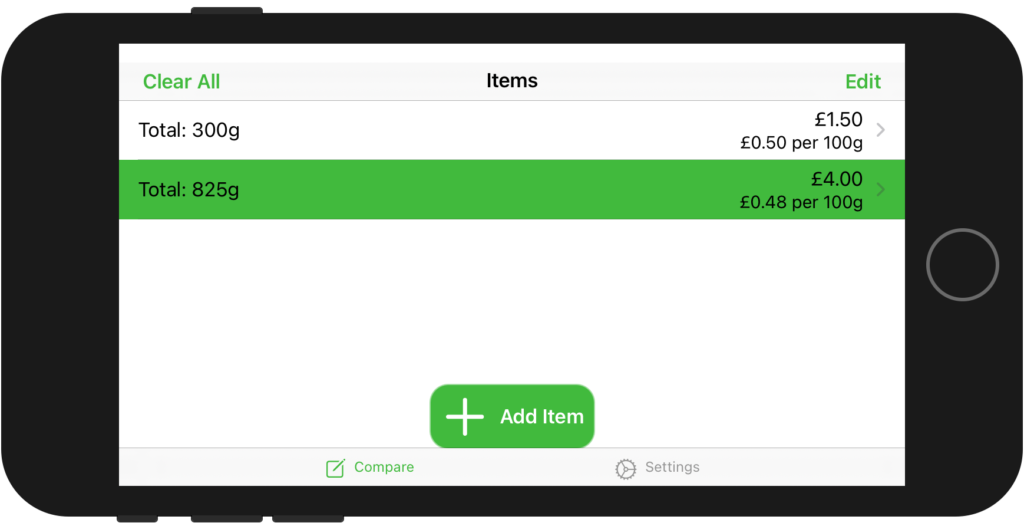
Now that is easy to see which is the better value for your money.
Beware of a bad deal
When shopping, I’m always looking for a bargain. If you have been my article on the discount aisle then you will know about the reduced stickers.
However, just because it has a discount sticker on it, doesn’t mean it’s a good deal. Take these cans of lemonade as an example.
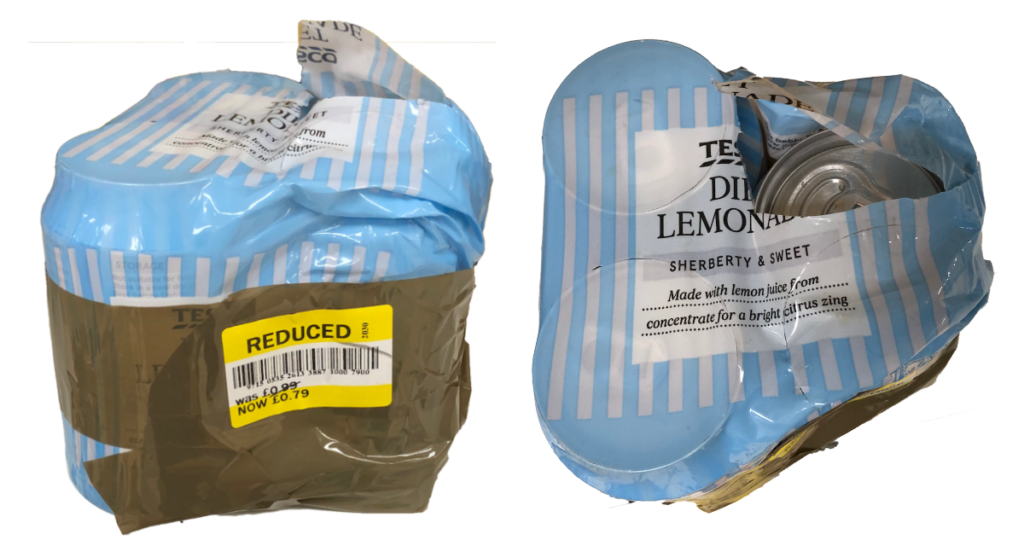
This was a 4 pack of lemonade cans. What would have happened is one can would have been damaged, and the shop is selling the remaining three cans at a reduced price. You’re saving money, what could be wrong with that?
The original packet of 4 cans price was 99 pence. Then they were reduced to 79 pence for 3 cans.
Calculating the cost per can is simply the price divided by the number of cans in the packet.
| Number of Cans | Price | Cost per Can |
| 4 | 99 | 24.75 |
| 3 | 79 | 26.34 |
When the shop discounted the packet, they increased the cost per can.
Unless you do not want the fourth can, it is a better deal to buy the 4 pack.
Compare like for like
Remember when you are comparing product to take into account the differences. The obvious difference would be price and size.
One difference that nearly caught me out was with orange squash.
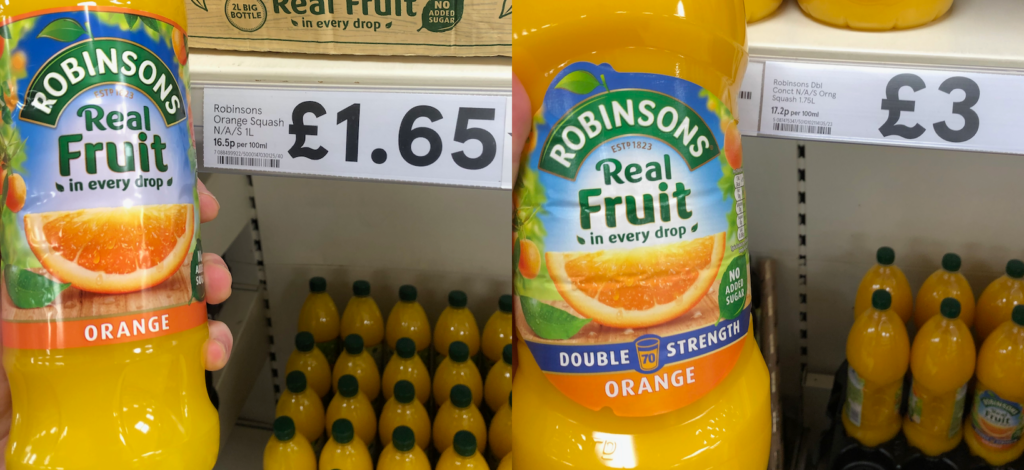
The squash on the left is 1 litre for £1.65, which works out to 16.5 pence per 100ml (millilitre). The other squash is 1.75 litres for £3.00, which is 17.2 pence per 100ml.
At first glance, the squash on the left is a better deal for 16.5p per 100ml. That is until you take into account that the righthand squash is double strength. Double strength effectively halves the cost per millilitre, which is 8.6 pence per 100ml.
Summary
When you are making a purchase, do a cursory check to see if you are being ripped off. That way, if you decide to buy a higher cost per item, then you will be an informed consumer.
If you want to make your life easier, then check out our Item Compare app on the App Store.
Happy Shopping!


